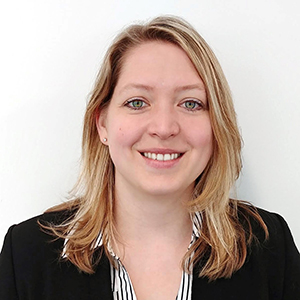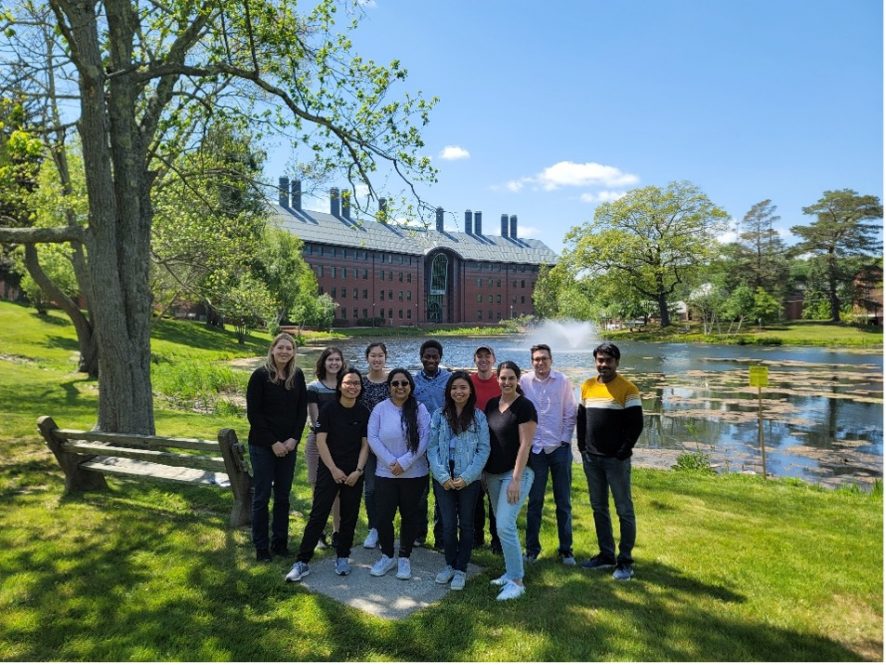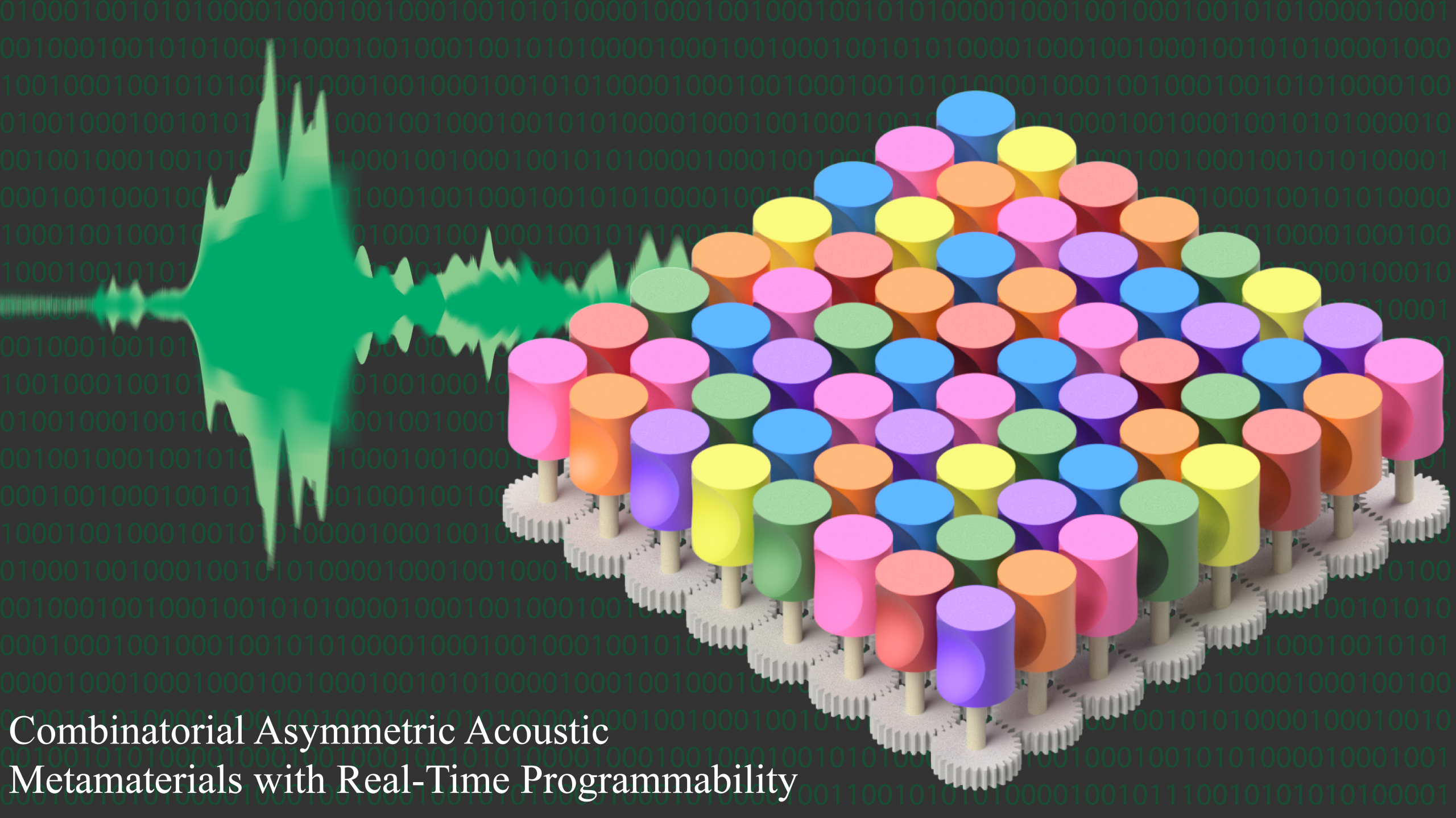Before sunrise, Jessica Rouge used to leap out of bed in the glow of darkness and race to the Charles River with her teammates for crew practice.
A few hours later, the future UConn associate chemistry professor would run back to Boston College for her morning science class: she was among a small group of female students pursuing a B.S. degree in biochemistry.
Rouge still sprints, but in a different way: now, she doubles as teacher, mother to two toddlers, mentor to young scientists, hobby musician and soon she will potentially add another role to her repertoire: science entrepreneur.
Rouge’s lab group, which is more than 50 percent female, “seeks to understand how enzymes and nucleic acids can be used in new ways to engineer highly specific and targeted responses in chemical and biological systems. Specifically, her team is interested in developing new chemical strategies for assembling catalytic RNA sequences at nanoparticle surfaces for sensing, diagnostic, and therapeutic applications.”
Rouge was a 2022-2023 recipient of the SPARK Technology Commercialization Fund, a program that helps shepherd the process of translating invention to entrepreneurial success.
With the preclinical data she was able to secure using the Spark Fund resources, Rouge is hopeful that she and her collaborators are close to licensing her technology.
Being a Female in Science
Rouge, the Paul Krenicki Chair of Chemistry, acknowledges that the science, technology, engineering, and math (STEM) field can be challenging sometimes as a female scientist.
Her experience echoes national statistics.

Women make up only 26 percent of employed scientists, with minority women representing only 11 percent of that total. For many years, the STEM workforce in the U.S. has been predominately male, and overwhelmingly White and Asian, according to the 2019 U.S. Equal Opportunity Commission Special Topics Annual Report: Women in STEM.
A survey done by the Pew Research Center in 2017 found that half (50 percent) of women in STEM jobs say that they have been discriminated against at work because of their gender.
For Rouge, she has learned that throughout her career in science “the world gets smaller for females, rapidly.”
This is why she is very conscious of making sure her UConn lab encourages females to be involved.
“I give those spots in my lab to whoever deserves it scientifically, but I try to be as diverse as possible,” she notes.
Throughout her professional and personal life, Rouge said she’s been fortunate to have strong female role models.
Several times a week after high school, Rouge studied under the auspices of a female biologist at a local college who ignited her interest in working with DNA and biochemistry.
“I think about her a lot and throughout my career. She’s a female who brought me into her lab at a very young age and ever since then, I’ve dreamed of wanting to run my own lab,” Rouge says proudly.
Paving the Way for Young Female Scientists
Ina de la Fuente worked for Rouge on her doctoral studies at UConn and is now pursuing her postdoctoral research at UMass Amherst.
“It was a great honor to have been a student of Professor Jessica Rouge. As a young female professor at UConn, she serves as a beacon of representation and empowerment in the field of science, particularly in chemistry, where women are often underrepresented. She has always been highly motivated and relentless in her pursuit of the scientific truth. Her mentorship has instilled in me a perpetual curiosity of the world and a drive to find answers through experimentation,” Fuente says.
Even with Rouge’s hectic life, Fuente observed that she always found a way to carve out space for her students.
“Despite her busy schedule, she would find time to reach out to her students to discuss ideas, experiments, career prospects, and many times, their personal wellbeing. She would take time to give constructive feedback on their presentations and manuscripts and to ensure that everything in the lab is in order,” she says.
Fuentes watched her professor navigate her life as a brand-new mother of two, while running a science lab: a feat she admires and hopes will inspire other women.
“Beyond imparting knowledge and skills, she actively fosters a collaborative culture and resilience among her students. She would share personal stories of overcoming challenges in her own life and career, inspiring perseverance amidst adversities. I personally had the pleasure of seeing Dr. Rouge go through several milestones of her life – from becoming a tenured professor to being a loving mother of two – and I have great respect and admiration for her. She has allowed me to find my own path as a researcher, and I think her story should stand as an inspiration for other aspiring female scientists,” Fuentes notes.
Rouge intentionally shares her life as both a parent and scientist with her students.
“I knew it would be difficult to do all the things I wanted to do, but I found I love what I do despite its complexities. Running my lab is one of the most exciting things I do. I love being a parent too. I want to be that example that shows people they can be a parent and balance their career if they choose to do it. I like to share with people that that’s another aspect of my life,” she says.
Music, Biochemistry, and Recharging
When Rouge’s mind needs a break from developing chemical strategies, she pivots to other passions: playing music, both known songs and improvising on her own.
“We’re not taught that in school with regards to science. We’re taught that science is objective or empirical, but when you think outside the box, science is a lot like music. You think of new arrangements, you take the same thing you’ve seen all along and apply it in a new way. I find being a scientist satisfies that creative side. When you’re involved in both the empirical and creative side, they benefit each other in so many ways,” she says, adding that she played clarinet in the symphony throughout college and still plays piano today.
Rouge currently teaches a writing class for scientists at UConn. She’s found “it’s somewhat rare to come across” a student who thrives both scientifically and creatively. She recalled having a student in her lab who also designed scientific illustrations, a skillset that helps him to reach a greater audience with his research.
“I’m hoping to encourage more students to embrace their other skills and use them in their scientific experiences,” she says.
For someone as busy as Rouge, recharging through creative and other varying outlets is vital for her mental health. She hopes her students follow her lead here.
Whenever she travels somewhere new, or “exits the lab and enters her home with her one and three-year-olds, it’s a daily reset.”
This shift in energy opens her mind to ideas she believes she wouldn’t have conceived of without the break.
“You think of new creative ideas when you come back from a break. The answer could be right in front of you, but you need to step away to see it,” she says. “Take a break, recharge, you can’t be in a lab all the time or you’ll burn out. I try to set that example myself and show students it’s ok.”



